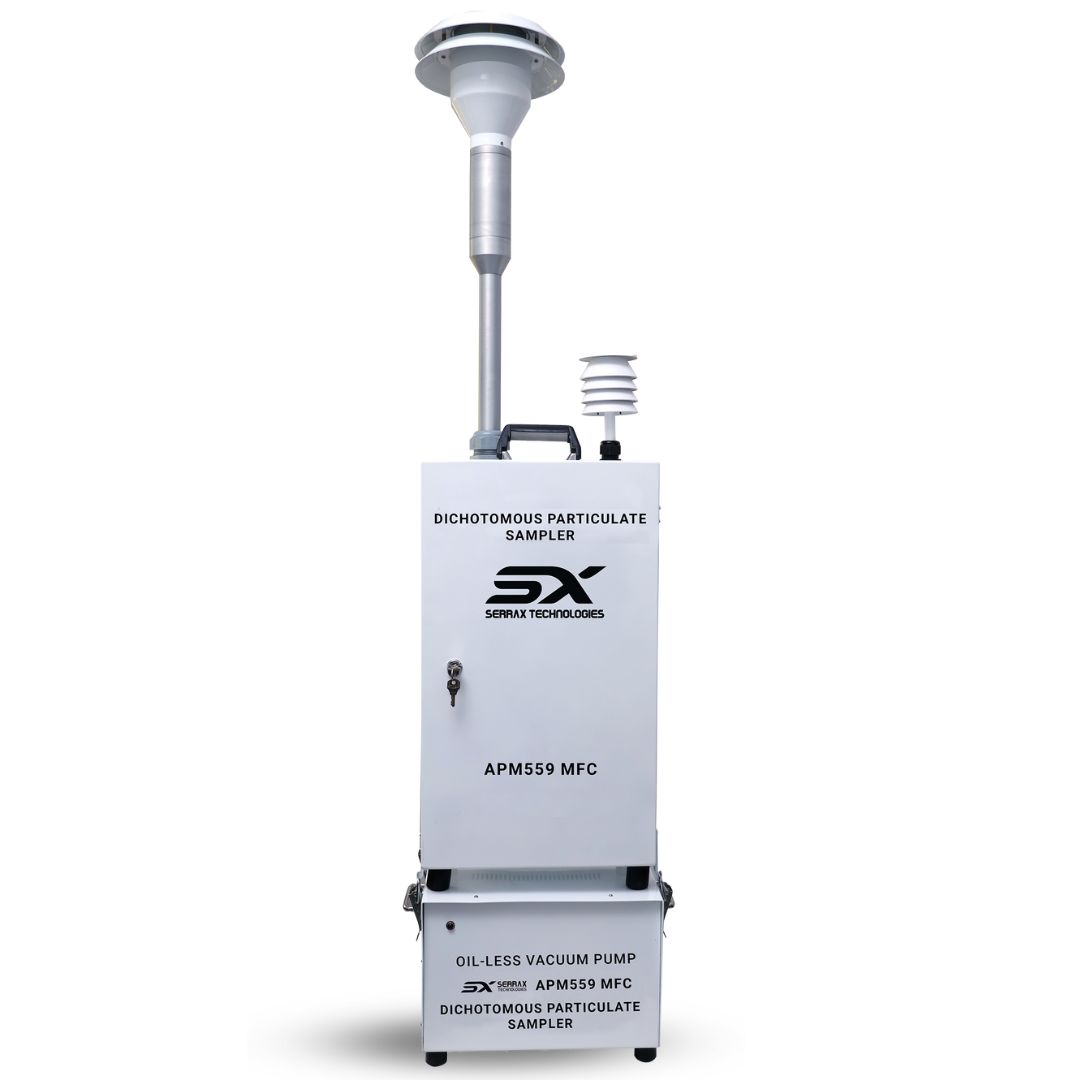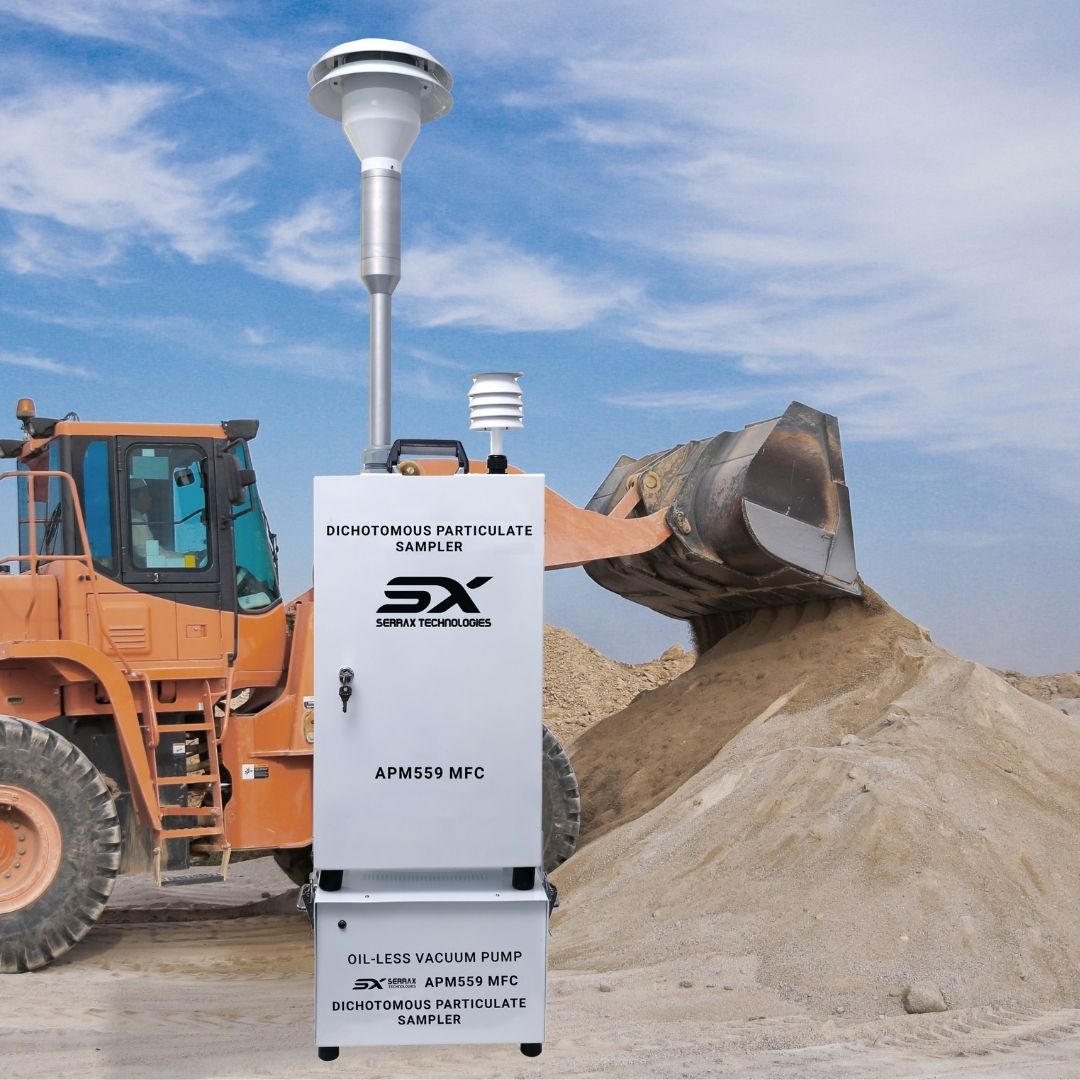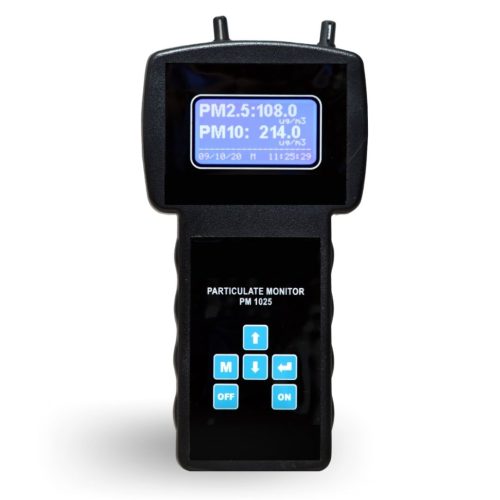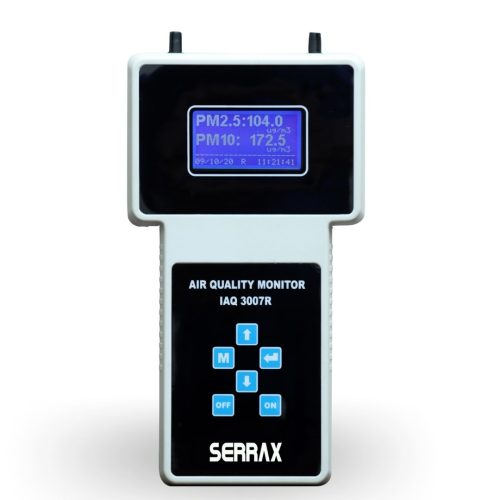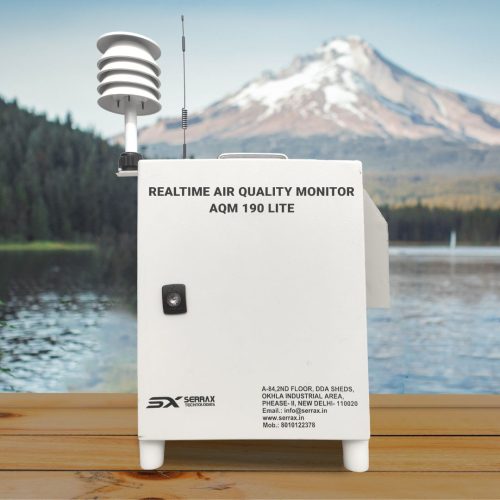Dichotomous Sampler – APM559 MFC
• Collection of fine (PM-2.5) and coarse fractions of PM-10 on two separate 47 mm filters
• Active flow control system using mass flow controller. Controls at rates ranging from 5 to 18 volumetric L/min.
• The flow rate by MFC system is actively sensed and controlled at a predetermined set point
• The sampler displays the current volumetric flow rate (L/min.), Total Volume, Elapse Time, Coefficient of Variation (CV), Filter Temperature, Filter Pressure and Barometric Pressure.
• The Sampler has auto shut off at filter chock and low flow rate
Product Description
PM 10 and PM 2.5 MFC Dichotomous Sampler is a type of air sampler that is commonly used in environmental monitoring and research. It is designed to collect particulate matter (PM) from the air and is capable of discriminating between two size fractions of PM, namely PM 10 and PM 2.5.
PM 10 refers to particles with a diameter of 10 micrometers or less, while PM 2.5 refers to particles with a diameter of 2.5 micrometers or less. Both types of particulate matter are of concern for public health because they can penetrate deep into the respiratory system and cause respiratory and cardiovascular problems.
The sampler works by drawing air through a series of filters, which separate the PM based on their size. The PM 10 fraction is collected on a filter with a pore size of 10 micrometers, while the PM 2.5 fraction is collected on a filter with a pore size of 2.5 micrometers. The sampler is equipped with a mass flow controller (MFC) to ensure a constant flow rate during sampling, which is essential for accurate measurements. The split flow configuration of the virtual impactor allows a PM10 aerosol to be separated into fine particles and coarse particles for subsequent collection onto 2 separate PTFE membrane filters.
Once the sampling is complete, the filters are removed and weighed to determine the mass of PM collected. The results can be used to assess the levels of particulate matter in the air and to evaluate the effectiveness of pollution control measures.
The PM 10 and PM 2.5 MFC Dichotomous Sampler is a valuable tool for monitoring air quality and understanding the impacts of particulate matter on human health and the environment
The other sampler is the PM2.5 Fine Particulate sampler (APM555MFC).
APM 555 MFC sampler through an omnidirectional inlet designed to provide a clear aerodynamic cut point for particles larger than 10 microns.
Related Products
Explore Other Catagories
Air Quality Monitoring(8)
The Importance of Air Quality Monitoring In a time when environmental issues are increasingly important, the quality of the air we breathe has a direct impact on public health. Numerous health issues and environmental deterioration are caused by air pollution, a global problem with far-reaching effects. In this regard, the importance of air quality monitoring…
Automatic Weather Station(2)
Enhancing Meteorological Precision with Automatic Weather Stations Automatic weather stations have become essential tools for gathering, analyzing, and sharing vital meteorological data in the field of meteorological developments. These high-tech tools have completely changed how climate scientists and meteorologists track and evaluate atmospheric conditions. Automtic weather station provide precise timely information that is essential for…
Food Safety & Inspection(2)
A Comprehensive Exploration of Food Safety and Inspection The safety and quality of the food we eat are, without question, the most important factors in the complex web of our contemporary food chain. The importance of food safety and inspection is highlighted by customers' growing consciousness regarding the source and preparation of their food. An…
Gas Monitors & Analyzers(14)
Essential tools for determining, measuring, and analyzing the concentration of different gases in the air are gas monitors and analyzers. These devices are essential for industrial processes where the presence of certain gases may present risks or affect the quality of the product, environmental monitoring, and worker safety. Now let's take a closer look at…

